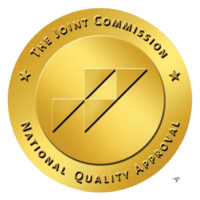The phenomenon known as “alcohol face” encompasses a range of visible indicators that can manifest as a result of chronic alcohol consumption, impacting both skin health and overall appearance. Characterized by symptoms such as facial redness, puffiness, and a sallow skin tone, these signs are more than just superficial concerns. They signal deeper physiological changes, including dehydration and oxidative stress, which accelerate aging. The intricate relationship between alcohol intake and skin deterioration prompts an important conversation about identifying these symptoms and understanding the long-term effects.
Identifying Alcohol Face
Chronic alcohol consumption can lead to a distinct set of facial characteristics often referred to as “alcohol face.” Clinically, individuals who frequently consume excessive amounts of alcohol may exhibit signs such as facial redness or flushing, due to the dilation of blood vessels; this condition is known as facial erythema. Facial redness is frequently accompanied by puffiness, resulting from the retention of fluids and inflammation, contributing to the characteristic appearance associated with alcohol face.
Furthermore, chronic alcohol intake is associated with skin discoloration, which may manifest as a sallow or uneven skin tone. This discoloration can be attributed to liver dysfunction, leading to an accumulation of toxins. Alcohol dehydrates the skin, exacerbating the development of fine lines and wrinkles. Loss of skin elasticity and collagen degradation, often accelerated by alcohol-induced oxidative stress, further contribute to premature aging effects. Recognizing these facial indicators is important for understanding the detrimental effects of excessive alcohol consumption on overall health.
Common Symptoms
When evaluating individuals for potential alcohol abuse, clinicians often observe common symptoms indicative of excessive consumption, manifested in the facial region. These include erythema or redness, particularly around the nose and cheeks, due to vasodilation and capillary damage. Additionally, facial puffiness or edema may occur as a result of the body’s fluid retention mechanisms being compromised.
Other symptoms include telangiectasia, characterized by visible small, dilated blood vessels, suggesting prolonged alcohol exposure. Dermatological conditions such as seborrheic dermatitis may also co-occur. Effective treatment options involve cognitive-behavioral therapy and pharmacotherapy, supported by family involvement and peer support groups. Continuous collaboration ensures a multidimensional approach, addressing both physiological and psychological aspects of alcohol misuse.
Long-Term Effects
Understanding immediate symptoms of alcohol misuse provides a foundation for recognizing insidious long-term effects. Chronic alcohol use causes significant skin damage, manifesting as premature aging, fine lines, and a dull complexion. Ethanol disrupts normal skin cell turnover and impairs collagen synthesis, while alcohol-induced dehydration exacerbates wrinkles and reduces skin elasticity, contributing to dermatological concerns.
Facial swelling, another hallmark of prolonged alcohol consumption, results from both vasodilation and fluid retention. Alcohol acts as a vasodilator, causing blood vessels to expand, leading to facial puffiness, especially around the eyes and cheeks. Evidence-based studies indicate that chronic misuse can also impair liver function, which may lead to a sallow or jaundiced skin tone. Recognizing these changes underscores alcohol’s long-term impact on facial appearance as visible indicators of internal health deterioration. Comparative health impacts of vodka consumption highlight serious risks to cardiovascular health linked to ethanol.
Steps for Recovery
Recovery from alcohol misuse involves a structured, evidence-based approach addressing physiological and psychological aspects of addiction. Initial assessment is pivotal, with clinical evaluations informing treatment options like detoxification, rehabilitation programs, and medication-assisted treatments to manage cravings and prevent relapse.
Cognitive Behavioral Therapy (CBT) is integrated to modify maladaptive thought patterns, while Motivational Enhancement Therapy (MET) aids in increasing motivation to change. Support groups, such as Alcoholics Anonymous or SMART Recovery, offer communal support fostering long-term sobriety. Family involvement enhances treatment efficacy by addressing familial dynamics, with ongoing counseling sessions essential to sustain recovery.

Final Thoughts
The phenomenon of “alcohol face” is marked by clinical observations such as facial redness, puffiness, and discoloration, resulting from chronic alcohol consumption. These symptoms are exacerbated by dehydration and oxidative stress, which contribute to collagen degradation and premature aging. Long-term effects include a flushed complexion and sallow skin tone due to dilated blood vessels. Understanding these manifestations is essential for recognizing alcohol’s detrimental impact on skin health. Recovery necessitates cessation of alcohol intake and adoption of skin-rejuvenating practices.
At BlueCrest Detox, we’re dedicated to elevating you from the struggles of substance use to the peaks of recovery and resilience. Our expert team offers personalized, evidence-based treatment services tailored to support your unique journey toward healing. Reach out to us for the compassionate care you deserve on your path to wellness. Follow us on Facebook for ongoing support, insights, and inspiration on your recovery journey.
Frequently Asked Questions
How Quickly Can Alcohol Face Develop After Starting to Drink Regularly?
The onset of facial changes due to regular alcohol consumption, often referred to as “alcohol face,” can vary greatly among individuals. However, such changes may begin to manifest within weeks to months of sustained drinking. Long-term effects include facial redness, puffiness, and premature aging. Implementing preventative measures, such as moderating alcohol intake and maintaining a healthy lifestyle, can mitigate these effects.
Can Alcohol Face Be Reversed With a Healthy Lifestyle?
Reversing the effects of alcohol on facial appearance is possible through evidence-based interventions. Adopting a healthy lifestyle, including proper skin care and improved nutrition habits, can mitigate alcohol-induced skin changes. Adequate hydration, nutrition rich in antioxidants, and consistent use of moisturizers promote skin recovery. Reducing alcohol consumption and incorporating a balanced diet enhance skin elasticity and tone.
Are Certain People More Prone to Developing Alcohol Face?
Certain individuals may be more prone due to genetic factors, such as variations in alcohol metabolism, and lifestyle factors, including frequency and quantity of consumption. Implementing skin care and prevention strategies, such as reducing alcohol intake and maintaining a balanced diet, can mitigate these effects. Understanding international trends in drinking, as discussed by global vodka consumption patterns, can provide insights into evaluating these risks.
Does Alcohol Face Affect All Age Groups Equally?
Alcohol face does not affect all age groups equally. Older individuals often exhibit more pronounced effects due to cumulative exposure, with genetic predisposition playing a role. Environmental factors, such as lifestyle and diet, also contribute. These elements interplay in the manifestation of alcohol face.
Can Moderate Drinking Still Lead to Alcohol Face?
Moderate drinking may still lead to early signs of “alcohol face,” including redness and puffiness due to alcohol’s impact. While these signs might be subtle, long-term effects of consistent intake can result in more pronounced changes. Even moderate consumption can contribute to these symptoms as evidenced by the correlation between alcohol use and skin health deterioration.




